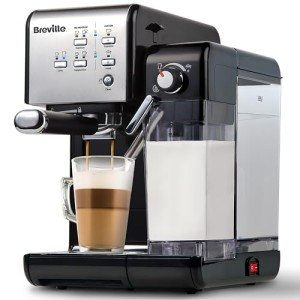The Ultimate Guide to Cappuccino Machines: Brewing the Perfect Cup
Coffees are a cherished coffee drink that integrates the rich tastes of espresso with steamed milk and milk foam. For many, nothing tastes much better than a homemade cappuccino crafted with precision. However, duplicating the skill of a barista at home needs the ideal devices. This is where cappuccino machines come into play. This post looks into the various kinds of cappuccino machines, how they work, and tips for choosing the best one for your needs.
What is a Cappuccino Machine?
A cappuccino machine is a specialized developing device created to make cappuccinos and other espresso-based drinks. These machines typically feature a built-in espresso maker, a milk frother, and different controls for changing temperature level and pressure. Cappuccino machines can be manual, semi-automatic, or completely automatic, offering various levels of user control depending on the complexity of the machine.
Kinds Of Cappuccino Machines
1. Manual Espresso Machines
- Description: These machines need users to operate most functions by hand, consisting of grinding coffee beans, tamping the premises, pulling the espresso shot, and frothing the milk.
- Pros:
- Offers total control over the brewing process.
- Can produce high-quality, café-like espresso.
- Cons:
- Steeper knowing curve.
- Needs more effort and time.
2. Semi-Automatic Espresso Machines
- Description: Semi-automatic machines automate some processes, such as water pressure. Users still require to grind coffee and froth milk by hand.
- Pros:
- Balanced control and benefit.
- Allows space for experimentation.
- Cons:
- Still requires useful skills.
- Can be complex for novices.
3. Fully Automatic Espresso Machines
- Description: These machines automate the whole brewing procedure, from grinding to frothing. Users merely select the wanted beverage.
- Pros:
- Extremely hassle-free and easy to use.
- Consistent outcomes with little effort.
- Cons:
- More costly.
- Limited control over the developing procedure.
4. Super Automatic Espresso Machines
- Description: Similar to fully automatic machines, however these models consist of features like a built-in milk frother and grinder. They prepare drinks with simply the touch of a button.
- Pros:
- Ultimate convenience; makes various drinks rapidly.
- Built-in cleansing and upkeep functions.
- Cons:
- High initial cost.
- Less hands-on experience with coffee making.
Key Features to Consider
When picking a cappuccino machine, several features can substantially influence performance and user experience. Here are some necessary elements to examine:
1. Develop Quality
- Products used (stainless-steel, plastic)
- Durability and longevity
2. Capacity
- Water tank size
- Bean hopper capability
3. Frothing Capability
- Kind of frothing wand (manual, automatic)
- Steam pressure and temperature level control
4. Alleviate of Use
- Instinctive controls
- Cleaning and upkeep requirements
5. Rate
- Range from budget to high-end designs
- Think about guarantees and customer assistance alternatives
6. Brand Reputation
- User reviews and skilled opinions
- Availability of replacement parts
The Brewing Process
To brew the best cappuccino at home, follow this process, despite the machine type:
- Prepare the Espresso: Use newly ground coffee beans and pull a double shot (approximately 2 ounces) of espresso.
- Froth the Milk: Steam fresh milk to a temperature about 150 ° F( 65 ° C)utilizing the steam wand or automatic frother.
- Integrate: Pour the steamed milk over the espresso, followed by a layer of milk foam (equal parts espresso and steamed milk, with about 1 cm of foam).
For a visual representation, here's a basic table comparing the attributes of the cappuccino machine types:
| Machine Type | Control Level | Ease of Use | Cost Range | Perfect For |
|---|---|---|---|---|
| Manual Espresso Machine | High | Challenging | Low to Medium | Coffee lovers, perfectionists |
| Semi-Automatic Machine | Medium | Moderate | Medium | Home baristas, enthusiasts |
| Completely Automatic Machine | Low | Easy | Medium to High | Casual drinkers |
| Super Automatic Machine | Extremely Low | Very Easy | High | Busy specialists |
Often Asked Questions (FAQs)
What is the very best milk to use for coffees?
Whole milk is commonly chosen for frothing due to its fat material, which develops a velvety texture. Nevertheless, alternatives like almond milk, oat milk, or soy milk can be used, though they might need various frothing methods.
How do I tidy my cappuccino machine?
Many machines include specific cleansing instructions. Typically, Office Espresso Machines should frequently clean the group head, steam wand, and drip tray. For automatic machines, many models include self-cleaning cycles.
Can I use pre-ground coffee rather of entire beans?
Yes, you can use pre-ground coffee. However, newly ground coffee usually produces a more flavorful espresso due to the oils in the beans being preserved.
Just how much should I invest on a cappuccino machine?
The price varies substantially based upon functions, brand, and quality. A standard, excellent quality machine might begin around ₤ 200, while high-end super automatic machines can exceed ₤ 2,000.
How frequently should I replace my cappuccino machine?
With proper upkeep, a high-quality cappuccino machine can last for several years. Nevertheless, you may consider upgrading if you find your machine no longer fulfills your developing needs or experiences performance problems.
Cappuccino machines are powerful allies in delivering the ideal brew in your home. Whether you prefer manual interaction with your coffee or prefer the convenience of totally automated machines, understanding the numerous types and their features will help you in making the best option. By buying the ideal machine for your needs and using the right strategies, anyone can delight in a barista-quality cappuccino from the convenience of their own cooking area. With a little bit of perseverance and creativity, the art of cappuccino developing can become a wonderful routine, developing not just coffee but moments of happiness.

